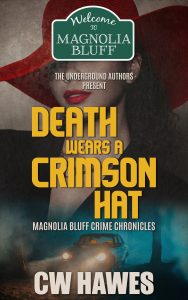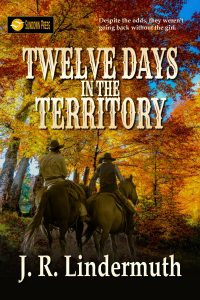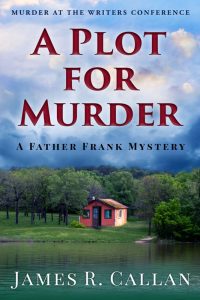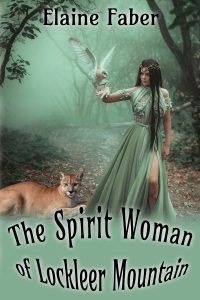Last week, this blog featured a post by CW Hawes on the Magnolia Bluff Chronicles, a series of nine books, each written by a different author. The first of those books, Death Wears a Crimson Hat, by C.W. Hawes, will be published next week.
But I want to add a little bit to last week’s discussion on this different type anthology. First, the nine authors engaged in this anthology series come from the U.S. and Canada and Mexico. So, there are no “in-person” meetings – except if we consider zoom meetings as “in-person.” And perhaps zoom-like meetings are the new “in-person” meetings.
Hawes mentioned that we decided to make the unifying factor a small Texas town in the Hill Country. That sounds simple, and I thought that – before we accomplished it. But, nine writers imply nine different takes on … well, most everything. The placement of the town was the first decision. Next, the size – how small or how large. And then the name. Ah, that deserved some negotiation. Done.
Not quite. What makes up the town? If our books are to cover the same town, what establishments in the town do each of us need? This took some time. Until each writer had an idea of what his or her book will cover and what town points of interest will be needed, the list was incomplete. Those items (police station, church, various eating establishments, courthouse, etc.) came in slowly, as each author began to outline or produce.
The plan Is to publish one book in the series each month, beginning in April 2022 and ending in December 2022. Fortunately, the various months people wanted produced no problems.
Of course, the characters that each book added would be available for all succeeding books. At the same time, if a character were eliminated (killed, moved out of town, or for that matter, just put in a wheelchair), the author needed to let those whose books follow be aware of the change. Wouldn’t be good for Bob to get killed in book 3 of the series, and then have book 5 feature that same Bob. Unless … (Any supernaturals here?)
There will be landmarks, stores, monuments, etc. in the town. Many of those will be added by various authors. The other writers need to be kept aware of how the town landscape changes – to either use it, or not be impacted by it. A working map needed to be produced so we all knew just where things belonged. Ugh. That was (and still is) difficult.
And to help the visual appeal of the series, the covers need to fulfill two requirements. First, there needs to be some unifying element so that the nine book covers look like they belong in one series. And second, each cover needs to reflect that particular author’s book. Yes, this is a series. But each book will be one author’s book: reflect his story (and be a standalone book for the reader). There were a number of zoom discussions on the cover. Let’s hope we got that right.
And so, with many of those complications solved and others worked as we move along, the Magnolia Bluff Chronicles series hits the press – actually, the Amazon sales page, – next week. Each story is unique to the particular author, but gives the reader a comprehensive look at the small town of Magnolia Bluff and a chance to solve the murder mystery before “The End.”
What do you think about this type anthology? Will it work?
jim


 use built by a man who rode with Buffalo Bill Cody. A retired newspaper editor, he is now librarian of his county historical society where he assists patrons with genealogy and research. He has published 19 novels and two non-fiction regional histories. He is a member of International Thriller Writers and a past vice president of the Short Mystery Fiction Society.
use built by a man who rode with Buffalo Bill Cody. A retired newspaper editor, he is now librarian of his county historical society where he assists patrons with genealogy and research. He has published 19 novels and two non-fiction regional histories. He is a member of International Thriller Writers and a past vice president of the Short Mystery Fiction Society.
 tragic-comic bubble and squeak.” —William Harrison Ainsworth, New Monthly Magazine, review of Moby Dick by Herman Melville (1851)
tragic-comic bubble and squeak.” —William Harrison Ainsworth, New Monthly Magazine, review of Moby Dick by Herman Melville (1851) main speaker at a writers conference. But after the opening session and in front of a crowd, Maggie DeLuca, Father Frank’s sister, accuses Granet of stealing her story and says he will pay.
main speaker at a writers conference. But after the opening session and in front of a crowd, Maggie DeLuca, Father Frank’s sister, accuses Granet of stealing her story and says he will pay. has a number of mysteries published, including a four-book series centered around a cat who can actually solve crimes, and a three book series set during World War II. She’s multi-published in magazines and over twenty anthologies. But today she’s telling us a little about her latest mystery, The Spirit Woman of Lockleer Mountain. It weaves together mysteries about a secret government installation, a missing sister who may have amnesia, drug sales to teenagers, and sightings a illusive woman in a flowing green dress with a mountain lion, who just might be the legendary Native American Spirit Women.
has a number of mysteries published, including a four-book series centered around a cat who can actually solve crimes, and a three book series set during World War II. She’s multi-published in magazines and over twenty anthologies. But today she’s telling us a little about her latest mystery, The Spirit Woman of Lockleer Mountain. It weaves together mysteries about a secret government installation, a missing sister who may have amnesia, drug sales to teenagers, and sightings a illusive woman in a flowing green dress with a mountain lion, who just might be the legendary Native American Spirit Women. Unfortunately, I fear if I should ever be fortunate enough to find myself on that much discussed elevator, in spite of good intentions and hours of practice, I expect the conversation would more likely go something like this.
Unfortunately, I fear if I should ever be fortunate enough to find myself on that much discussed elevator, in spite of good intentions and hours of practice, I expect the conversation would more likely go something like this.